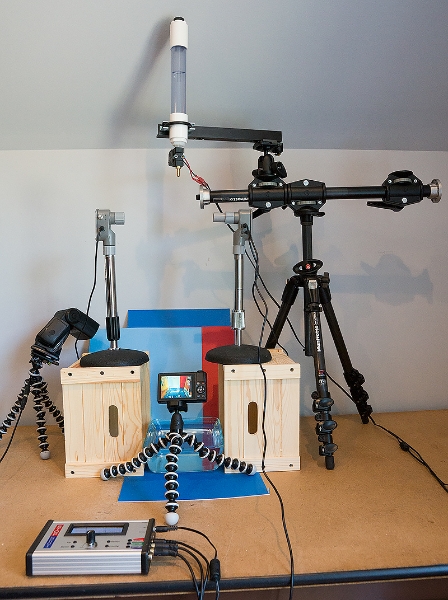Today I did one more round of water drop collision photography, following up on my experiments over the past month or so. This time, I used the Canon PowerShot S110, a really nice, very compact camera that takes Raw images and has full manual controls. (You really need to use manual focus for these images, as well as manual exposure.)
I should mention in passing that the only reason I had not tried this type of shooting with the S110 before now was that my camera went in for repairs in mid-June, and I just got it back yesterday. I had a mishap when I was trying to attach the S110 to a spotting scope for digiscoping; the attachment system I used did not work well, and I ended up pulling the lens assembly apart. I checked around on the internet and found a repair shop called Royal Camera Service, Inc., located in Illinois. I was a bit nervous about sending the camera out for repair, but I called them and then sent it out. It took quite a while, but, for $119.00, they did an excellent job, and restored the camera to good-as-new condition.
Anyway, I set the camera up in the same way I did for the earlier water drop shots, this time using a Youngnuo YN560 III flash along with the StopShot control device from Cognisys, Inc. I set the camera to Manual exposure mode and used manual focus; I pre-focused on a small hand bell sitting in the water tray at the spot where the water drops would fall. I set the exposure to 0.5 second and turned on the self-timer to 2 seconds. Then, after turning out the room lights, I pressed the shutter button, and, as the self-timer ran out, I pressed the button on the StopShot controller to trigger the falling of 2 water drops. After the drops passed the infrared sensor, the flash was triggered (during the half-second exposure), and the flash caused the camera to capture the image of the collision of the drops.
The setup for this procedure is shown in the first image in the gallery below, and sample images are included after that one.














